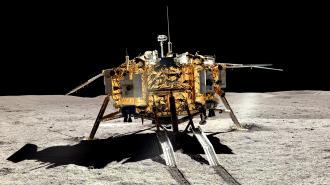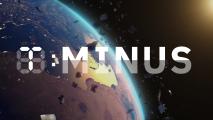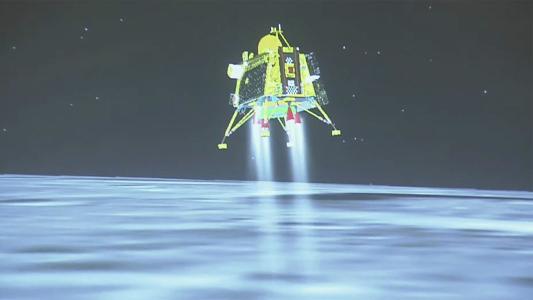Scientists have used recordings from a first-of-its-kind rover to create a new moon map that reveals structures hidden deep beneath the lunar surface.
The background: In 2019, China made history as the first nation to soft land a spacecraft on the far side of the moon, giving the world its first up-close look at the moon’s more rugged hemisphere.
Though the mission was only expected to last a year, the lander and its rover — Chang’e 4 and Yutu-2, respectively — are still going strong, recording new data and collecting lunar samples for future analysis.
The new moon map reveals the first 1,000 feet below the lunar surface.
What’s new? In 2020, researchers used recordings from Yutu-2’s Lunar Penetrating Radar (LPR) — an instrument that sends radio signals into the moon and then records the echoes that come back — to map the first 130 feet below the moon’s surface.
Now, an international team led by researchers at the Planetary Science Institute in Arizona has used Yutu-2’s LPR recordings to create a new moon map that reveals the first 1,000 feet below the lunar surface in an area near the south pole.
The discoveries: Lead study author Jianqing Feng told Live Science the team found evidence of a crater in the top 130 feet of the moon, along with layers of dust and broken rock they believe were ejected at the time of impact.
Farther down, the new moon map depicts five layers of volcanic rock. According to the researchers, these likely formed billions of years ago when asteroids or comets hit and cracked the moon’s surface, causing volcanic eruptions.
“[The moon] was slowly cooling down and running out of steam.”
Jianqing Feng
The fact that layers closer to the surface were thinner than ones farther down suggests that less lava was released during more recent eruptions.
“[The moon] was slowly cooling down and running out of steam in its later volcanic stage,” Feng told Live Science. “Its energy became weak over time.”
Why it matters: Experts believe the moon has been orbiting the Earth since soon after our planet formed, so the more we can learn about its history, the better our understanding of the conditions that caused our planet to become what it is today.
That information could help in the hunt for other planets like ours — including ones hospitable to life.
We’d love to hear from you! If you have a comment about this article or if you have a tip for a future Freethink story, please email us at [email protected].






